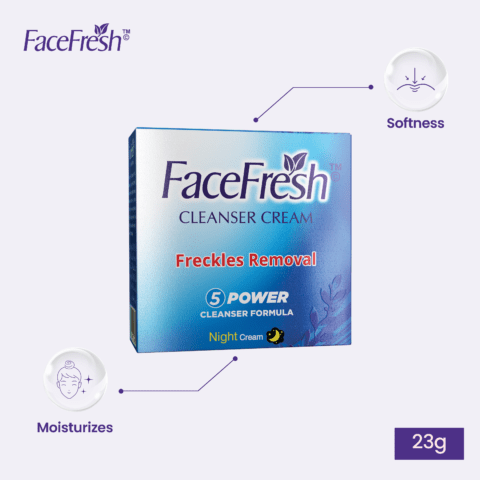Introduction
Our skin is the largest organ of our body and serves as a protective barrier against the external environment. Understanding your skin type is crucial for proper skin care and maintaining its health. One common skin type is “normal skin.” In this article, we will discuss how you can determine if your skin is normal and provide insights on caring for it effectively.
Important Points
- What is Normal Skin?
- Characteristics of Normal Skin
- The Importance of Identifying Your Skin Type
- How to Determine If Your Skin is Normal
- Observing Texture and Appearance
- Assessing Oil Production
- Evaluating Sensitivity
- Considering Pore Size
- Analyzing Skin Tone
- Skincare Routine for Normal Skin
- Cleansing
- Exfoliating
- Moisturizing
- Protecting from Sun Damage
- Nourishing
- Treating Specific Concerns
- Regular Skin Check-ups
What is Normal Skin?
Normal skin is a well-balanced skin type that is neither too oily nor too dry. It is characterized by its healthy appearance, with a smooth and supple texture. Normal skin typically has small pores, an even skin tone, and is not prone to frequent breakouts or sensitivity issues.
Characteristics of Normal Skin
Normal skin has several key characteristics that distinguish it from other skin types:
- Balanced Moisture: Normal skin maintains a good balance of oil and moisture, providing hydration without excessive greasiness or dryness.
- Smooth Texture: The surface of normal skin feels smooth and soft to the touch, indicating a healthy epidermal layer.
- Even Skin Tone: Normal skin usually exhibits an even and uniform skin tone without significant discoloration or redness.
- Small Pores: The pores on normal skin are typically small and not easily noticeable, indicating a healthy sebum production level.
- Rare Sensitivity: Normal skin is less sensitive to external factors such as weather changes or skincare products, making it less prone to irritation or reactions.
The Importance of Identifying Your Skin Type
Determining your skin type is essential for tailoring an effective skincare routine. By understanding whether your skin is normal, dry, oily, or combination, you can select the appropriate products and treatments to keep your skin healthy and vibrant. This knowledge helps you avoid using products that could potentially disrupt the balance of your skin, leading to unwanted issues.
How to Determine If Your Skin is Normal
To determine if your skin is normal, you can consider the following factors:
Observing Texture and Appearance
Normal skin has a smooth and supple texture. It feels neither excessively oily nor dry. When you touch your skin, it should feel soft and pliable without any signs of roughness or tightness.
Assessing Oil Production
Normal skin exhibits balanced oil production. If you wake up in the morning and your skin feels comfortable without any visible oiliness or excessive dryness, it is likely that you have normal skin. Throughout the day, normal skin will maintain a consistent level of oil production, without experiencing extreme shine or flakiness.
Evaluating Sensitivity
Normal skin is generally less sensitive compared to other skin types. It tends to tolerate various skincare products and environmental factors without adverse reactions. If your skin rarely experiences redness, itching, or stinging sensations, it is a positive indication that you have normal skin.
Considering Pore Size
The size of your pores can also provide insights into your skin type. Normal skin typically has small, barely visible pores. If you observe that your pores are not enlarged or clogged, it suggests that you have normal skin.
Analyzing Skin Tone
Normal skin tends to have an even and uniform skin tone. It is less prone to hyperpigmentation, redness, or discoloration. If you notice that your skin tone appears balanced and consistent across your face, it is likely that you have normal skin.
Skincare Routine for Normal Skin
Having normal skin does not mean neglecting your skincare routine. Here are some key steps to maintain and enhance the health of normal skin:
Cleansing
Cleanse your skin twice a day using a mild, pH-balanced cleanser. This helps remove impurities and excess oil without stripping away natural moisture.
Exfoliating
Exfoliate your skin once or twice a week to remove dead skin cells and promote cell turnover. Use a gentle exfoliator suitable for your skin type to avoid irritation.
Moisturizing
Apply a lightweight, non-comedogenic moisturizer to keep your skin hydrated and supple. Look for moisturizers that provide a good balance of moisture without feeling heavy on the skin.
Protecting from Sun Damage
Even if your skin is normal, it is essential to protect it from the harmful effects of the sun. Apply a broad-spectrum sunscreen with an SPF of 30 or higher every day, regardless of the weather conditions.
Nourishing
Consider incorporating a serum or facial oil into your routine to provide additional nourishment to your skin. Look for ingredients like hyaluronic acid, antioxidants, and vitamins for optimal skin health.
Treating Specific Concerns
If you have any specific skin concerns, such as signs of aging or occasional breakouts, use targeted treatments or serums to address them. Consult with a dermatologist or skin care professional for personalized recommendations.
Regular Skin Check-ups
Schedule regular check-ups with a dermatologist to monitor the health of your skin. They can provide professional advice and detect any potential issues at an early stage.
Conclusion
Understanding your skin type, including whether you have normal skin, is crucial for proper skincare. By observing the texture, appearance, oil production, sensitivity, pore size, and skin tone, you can determine if your skin falls under the normal category. Remember to follow a consistent skincare routine that includes cleansing, exfoliating, moisturizing, sun protection, nourishment, targeted treatments, and regular check-ups to keep your skin healthy and glowing.




Leave a comment
Your email address will not be published. Required fields are marked *